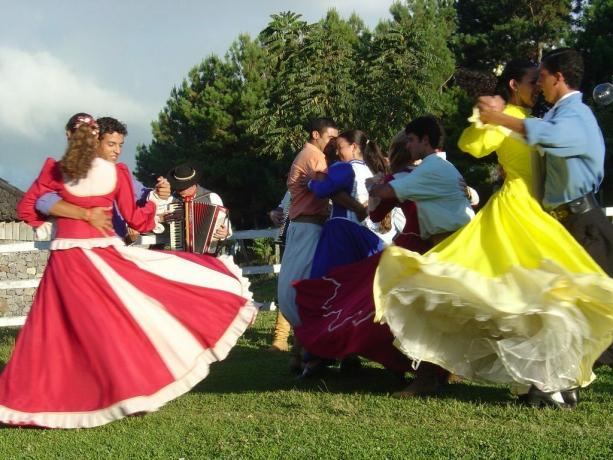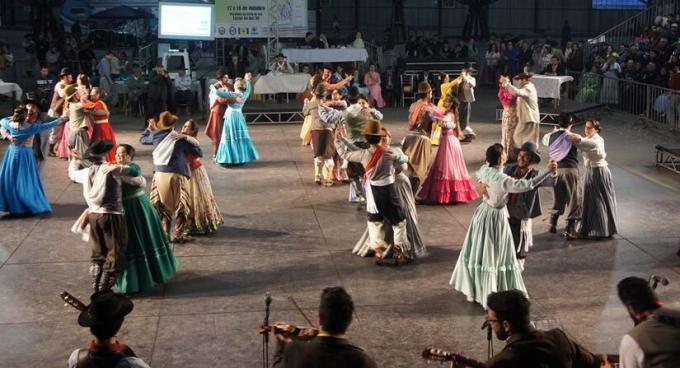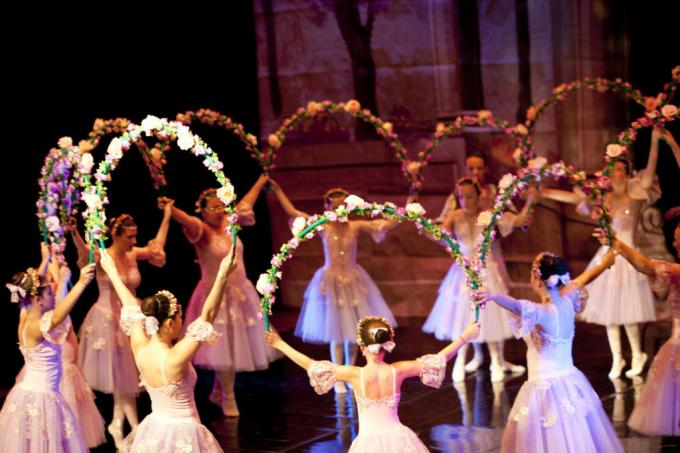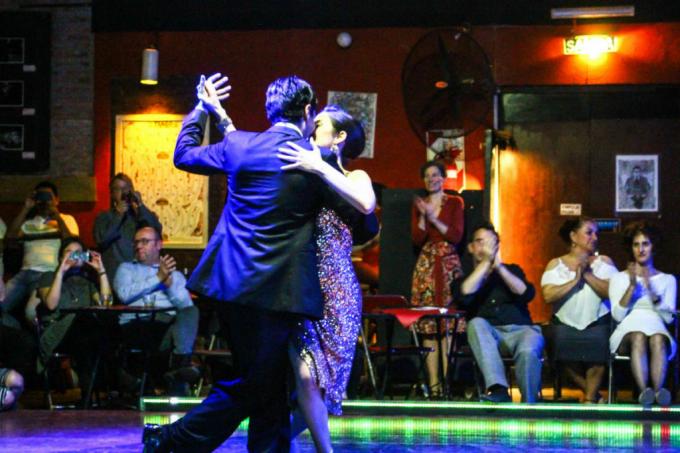Influenced by the arrival of european immigrants in the second half of the nineteenth century, the culture of the southern region is formed by the heritage of Spanish, Portuguese, Italians, Germans, among others.
With that, the region it is formed by unique elements, present in architecture, literature, music, cuisine and, above all, in dances and celebrations.
see more
Discover the origin of Folklore in Brazil
60 Myths and Legends from Brazil and the World – Folklore Characters…
Considered as the most choreographic Brazilian dances, the dances from the south they are marked mainly by the spirit of nobility and respect for women, characteristic of peasant teachings.
Did you want to know more? So, check below main dances of the southern region and be enchanted by the rhythms of one of the most multicultural regions of Brazil.
See some of folk dances typically better known southerners.

typical dance Rio Grande do Sul, is inspired by Portuguese dances brought with the arrival of immigrants.
Traditionally danced by men, the chula works as a competition between two dancers to the best sound of the gaúcha harmonica.
The presentation revolves around a challenge, where one of the participants must perform the sequence of steps taken by the opponent around the baton, and vice versa. The first one to make a mistake loses the dispute.

typical of Santa Catarina, the dance that was brought over by German immigrants, is based on the habanera, a Cuban ballroom dance style.
The vaneira incorporates waltz elements into its choreography. It can be divided into three categories: vaneira (normal rhythm and speed), vaneirinha (same dance modality but slower) and vaneirão (faster choreography and music).
When it comes to clothing, dancers wear clothes inspired by the style of the Middle Ages. European, with women in long dresses and long sleeves, and men in loose pants, shirt and vest.

Of Polish origin, the Mazurka is danced in all states in the southern region. It is characterized by a fast and engaging rhythm between couples spread across the stage.
The dance style emerges as a mix between ranch elements and ballroom dancing, always accompanied by violins and gaucho harmonicas.
Regarding the clothes, the clothes worn by the dancers are similar to those of the vaneira dances, given the similarity of rhythms and style.

Chimarrita arrived in Brazil along with Portuguese immigrants from the Azores region, around the 17th century.
Originally from Madeira Island (Portugal), the dance has a lively rhythm, in which couples of dancers are lined up in a line, initiate rhythmic movements involving clapping and tap dancing.
The clothes used in the dance by the women consist of a printed smock and a long skirt; for men, the traditional gaucho costume: dress shirt, vest and long, loose pants.
As an accessory, we can highlight the use of a rancher-style hat, long boots and a red scarf tied around the neck.

Also known as Dança dos Arcos Floridos or Jardineira, in balainha the dancers hold a flowery arch while performing dance movements called “balainhas”. The steps are very similar to those of the ciranda and only women participate.
With everyone in a row, the dance consists of passing the hoops over and under each other.
As a typical dance of Portuguese origin, the clothes are no exception to the rule. Similar to the costumes used in dances from the Iberian country, the balainha dancers are usually dressed in long, lacy dresses, with a printed smock; all this having the traditional colors as a cultural reference.

One of the few representatives of Spanish culture, Milonga is very popular in the region and also in Argentina. It is a type of ballroom dance, mixed with tango elements, where a couple perform choreographed movements to the sound of a sensual and elegant rhythm.
The characteristics of the clothes differ from the traditional style, with men wearing more casual social clothes, while women wear a plain and discreet dress, with high shoes.

Another dance of Portuguese origin was brought by immigrants in the 17th century. During the presentations, the dancers must organize themselves in the form of pairs, while each one holds the end of a ribbon connected to a pole 3 meters high, located in the center.
The objective of the dance is, while dancing, the participants form a kind of braid.
All of this commanded by music coming from instruments such as the viola, tambourine, cavaquinho and accordion.

Fandango is a well-known dance in Portugal and Spain, but when it arrived in Brazil with immigrants, it received strong indigenous influences.
Characteristics of the coastal regions of the Paraná, in it the dancers form a circle and then begin to perform waltz movements, tap dancing and clapping; all to the sound of fast, frantic beats.
See too: